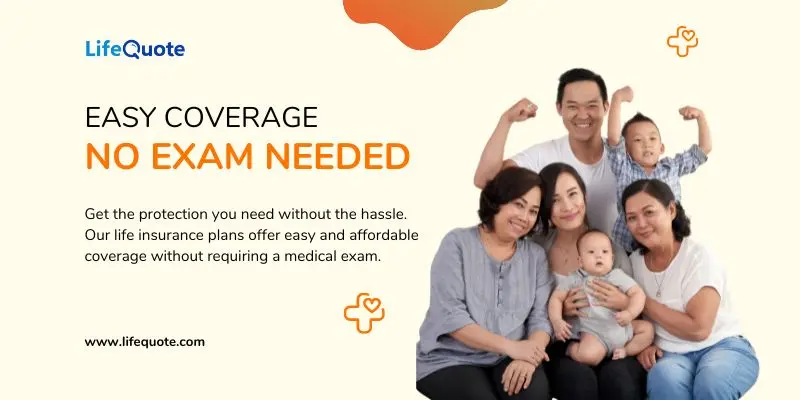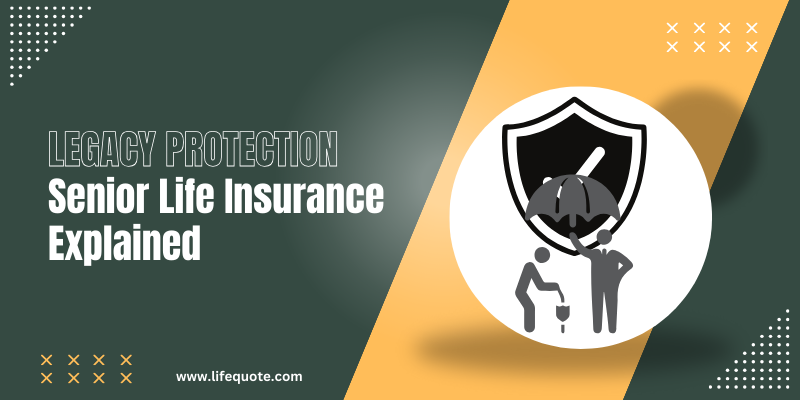- Speak to a licensed sales agent!
- (800) 521-7873
Tips to Cope with the Financial Burden of Breast Cancer

The journey after a breast cancer diagnosis is not easy. Many medical and emotional challenges have to be handled along with the financial burden that falls on the patients and their families. Even with health insurance, the out-of-pocket expenses keep the cancer patients away from the medical care they need.
In honor of Breast Cancer Awareness Month, LifeQuote is here to talk through the real costs of a breast cancer diagnoses. We will also tell you how to reduce those costs, and how life insurance can play a role.
According to most recent studies, breast cancer is the second most common type of cancer diagnosed (after skin cancer). With about 1 in every 8 women in the United States predicted to develop breast cancer in her lifetime, the probability of having diagnosed with a breast cancer is pretty high. The good news is, survival rates have been steadily increasing over the last 20 years. It’s important to understand the costs now so that when and if the time comes, you can be prepared to bear the financial burden of breast cancer.
What Is the Actual Cost of Having Breast Cancer in the US?
On average, depending on the stage at which breast cancer is diagnosed, the cost per patient in the two years following diagnosis can be anywhere from $72,000 to $183,000. These costs are mostly driven by the amount of chemotherapy and treatments needed.
But most people aren’t aware of the other costs that come with having breast cancer, beyond the hospital bills. These unexpected costs include:
- Transportation to and from treatments
- Childcare
- Special dietary needs
- Household help
- Decreased income/lost wages if you can’t work
How Can Those Costs be Lowered?
In October 2017, an article entitled “The Financial Cost of Breast Cancer.” was published by U.S. News & World Report. The author, Susan Johnston Taylor, interviewed three cancer survivors who shared their experiences and tips on handling the financial burden of cancer.
1. Melissa Thompson, Age 32, Diagnosed with Stage 3 Breast Cancer in 2015
It was only five weeks later after giving birth to her first child, that Melissa Thompson received her stage 3 breast cancer diagnosis. She had to make a fast decision if she wanted to freeze her eggs so she could potentially have more children.
Her fertility treatment was pre-authorized by her health insurance initially but the day before her scheduled egg retrieval, the insurance company reversed its decision. The fertility clinic threatened her with her collections and she was then forced to pay the entire $12,085 bill on her credit card. She didn’t know what else to do. This experience pushed her to become a cancer patient advocate and she worked to change state insurance laws. Due to her efforts, on June 20, 2017, Connecticut became the first state to require insurance coverage for fertility preservation.
2. Maryann Small, Age 52, Diagnosed with Stage 1 Breast Cancer in 2013
It was a routine mammogram, when Maryann Small, then age 52, was diagnosed with an invasive lobular carcinoma (stage 1 breast cancer).
“Everybody has a copay,” Small says. “With mammographies, most insurance companies cover them when they’re diagnostic, but once you’re diagnosed, they’re subject to a copay,” she adds. “You also have to have an ultrasound pretty much every time.”
After her breast cancer diagnosis, Marianne Small shared that one of her colleagues told her about a prescription drug savings program FamilyWize, which reduced her prescription cost to $400 every 90 days. She was also fortunate enough to connect with a local cancer support group, where she was introduced to programs such as Meals on Wheels that can help relieve some of the cost associated with breast cancer.
3. Hannah Martine, Age 29, Diagnosed with Stage 4 Breast Cancer in 2015
Hannah Martine is a single professional in San Diego who was diagnosed with a stage 4 breast cancer. Because she received health insurance from work, she had no choice but to continue working during her treatment. She has to take a short-term disability to have a mastectomy, but her recovery took longer than expected. Even with employer- insurance, she has to pay a lot of money from her own to cover the medical expenses.
With the help of a cancer care coordinator at her hospital, she got qualified for a free meal delivery service for cancer patients and also received some financial assistance from Hope( a nonprofit for Young Adults With Cancer).
Options to Lower Your Cost:
Even with health insurance, the price of breast cancer can be debilitating for many individuals. But know that help is out there. Consider looking into the following options to lower your medical costs:
- Ask if you can set up a payment plan with your healthcare provider rather than paying everything in one lump sum
- Ask if the hospital has any funding for uninsured or underinsured patients. For example, Jackson Memorial Hospital in Miami
- Look for referrals for local and national agencies that offer financial aid for medical and living expenses, such as the American Cancer Society or the Cancer Financial Assistance Coalition. For breast cancer specifically, look into the Susan G. Komen society.
- Consider partnering with a social worker or advisor to schedule your visits to help ease the financial burden strategically.
- Ask if you qualify for any clinical trials
- Ask your doctor about generic versions of your medications, as brand names will tend to be more expensive. You can also ask for samples of these medications as well.
- Get tax deductions for certain medical expenses, such as preventative care, surgeries, visits to psychiatrists or psychologists, prescriptions, or travel costs associated with medical care.
- Critical Illness and Life Insurance: Many insurance companies offer coverage after you’ve been diagnosed with a critical illness or terminal disease such as cancer. This is called an accelerated death benefit rider, or a living benefits rider. In the event of a qualifying diagnosis, you can get a portion of the death benefit paid to you while you’re still living to help cover the costs of treatment.
>>Learn More: Critical Illness Life Insurance
How Does Breast Cancer Affect Life Insurance?
A lot of people are afraid that a breast cancer diagnosis makes them completely uninsurable when it comes to life insurance. We’re here to tell you that after breast cancer, there are options, so don’t lose heart in your pursuit to provide for your family.
It’s true, you may not qualify for a traditional term or whole life insurance policy like most others who are in good health. However, having breast cancer does not disqualify you from life insurance forever, especially if the cancer is caught in early stages.
Here are a few good tips on when to apply for fully-underwritten life insurance depending on where you are in the stages of breast cancer:
Tips to Apply for Life Insurance With Breast Cancer Diagnosis
- Stage Zero: AKA Non-invasive, not life-threatening breast cancer. You’re likely to get insured after two years of recovering from this stage.
- Stage One: 2 to 5 years after the date of your last treatment
- Stage Two: 5 to 10 years after the date of your last treatment.
- Stage Three: Expect longer waiting time before being fully underwritten, usually 15 years.
- Stage Four: If you’ve recovered (an amazing thing in and of itself), you still may not qualify for at least 15 years.
An alternative that doesn’t require as much wait time as full underwriting but may not be a great option for everyone is Guaranteed Issue Life Insurance. With these policies, you can get coverage regardless of health status, as long as you are a U.S. citizen, live in a qualifying state, and meet the minimum age requirement.
However, these policies typically have lower coverage amounts, capping out around $25,000. These also tend to be more expensive policies because of the risks associated with insuring people without a full underwriting process. They also tend to have what’s called a graded death benefit, which means that there is a waiting period before being covered from the death of natural causes.
If your cancer has metastasized, you likely won’t be able to obtain a life insurance policy. If you’re in the remission stage, look for a guaranteed issue policy instead or look into what is offered through your employer at a group rate. Once you are out of remission, you may be able to qualify for more affordable term or whole life policies, but the waiting period before you can be fully underwritten will depend on the severity of breast cancer you had.
Is There Anything I Can Do to Increase My Chances of Getting Life Insurance After Having Breast Cancer?
Yes. Typically, an ideal post-breast cancer life insurance candidate will have:
- Successfully completed their treatment
- Regular check-ups with a physician
- Remission that lasts 10 or more years
- Had breast cancer that was caught in its early stages
- Limited lymph node involvement
Questions Asked by Life Insurance Companies
It also doesn’t hurt to get prepared. Here are some questions you will be asked by life insurance companies if you apply for a policy after having breast cancer:
- When were you diagnosed?
- When was your last treatment date?
- What is the exact name/type of breast cancer you had?
- What stage of breast cancer did you reach?
- What grade of breast cancer did you have?
- What type of treatment did you use?
- What current medications are you on?
- Has there been any evidence of recurrence?
- Have you had any additional cancers?
- Do you have any additional health concerns?
Be prepared with contact information for your physician while you were being treated, as well as your pathology and follow-up reports, medical and treatment records, and a list of all medications and dosages taken.
In Summary
For breast cancer patients and survivors, the costs associated with this awful disease can be overwhelming. But there is hope, and there are options. As technology advances and survival rates increase, covering the costs and getting life insurance is slowly becoming easier and support has become more accessible.
If you’re a patient or survivor of breast cancer and are considering life insurance, talk to one of our agents today!
Reference:




